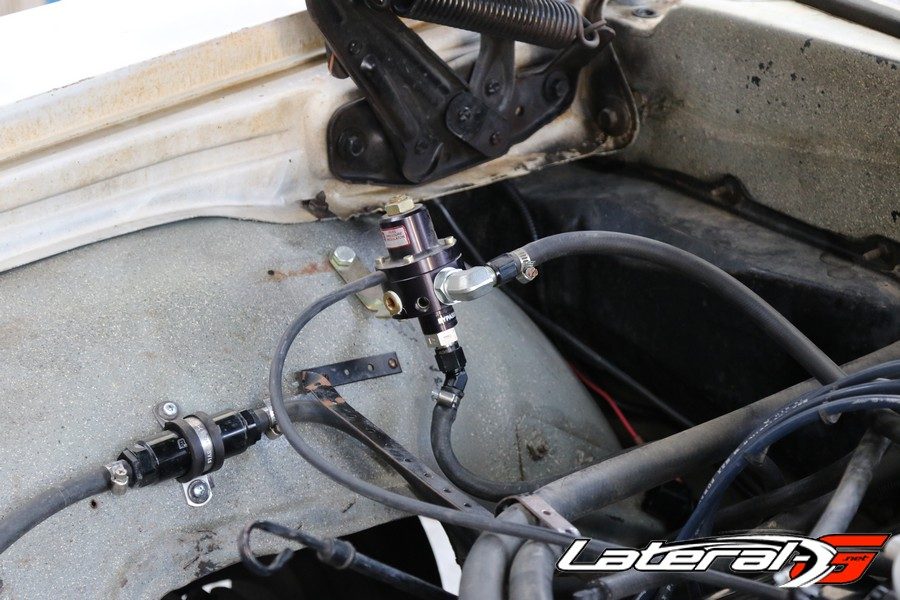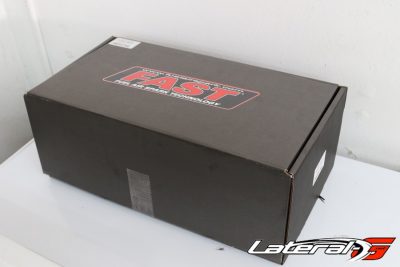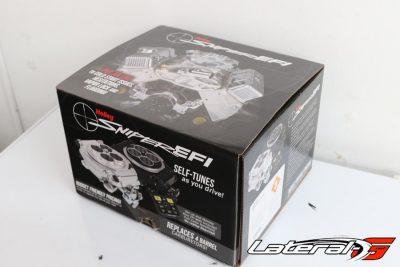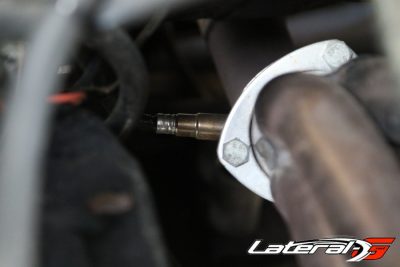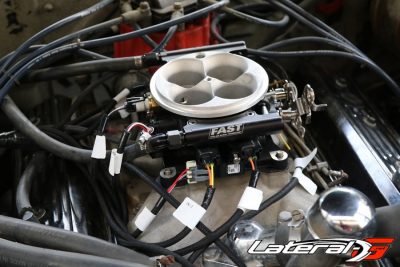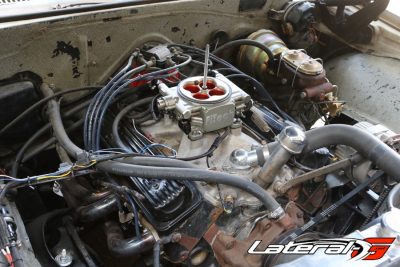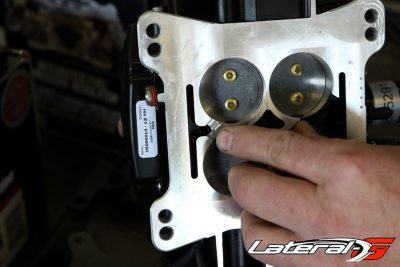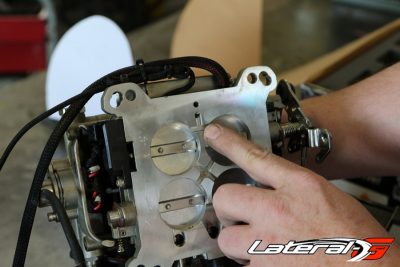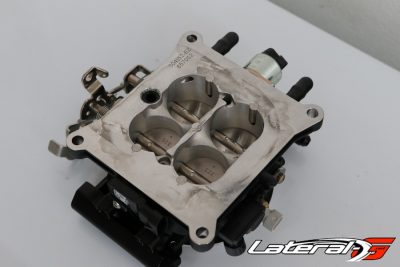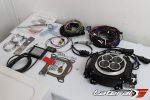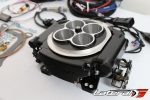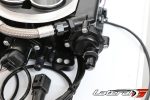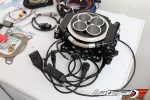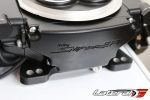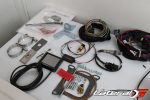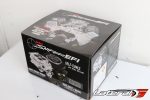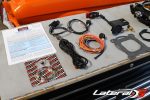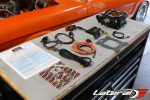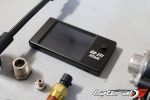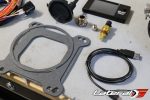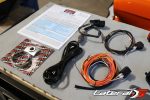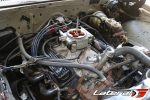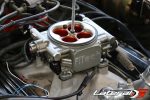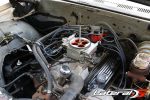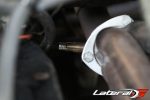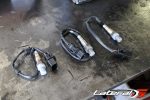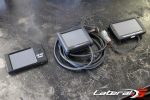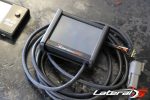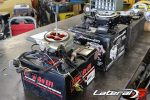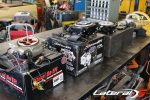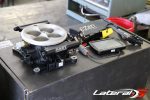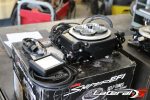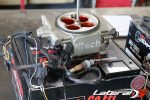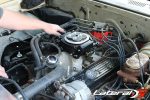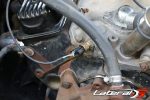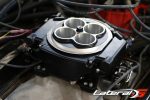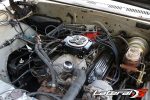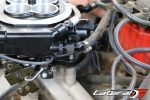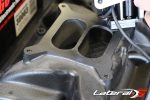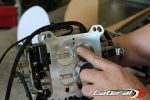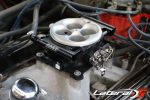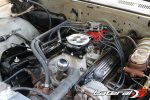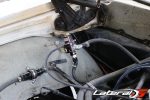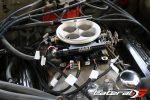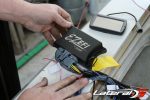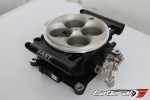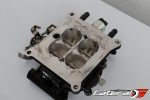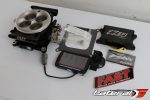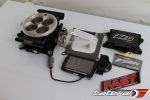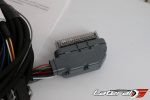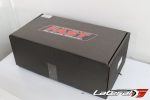FiTech GoStreet Vs. Holley Sniper Vs. FAST EZ-EFI
Appearance
Price Point
- Fitech Go Street EFI= $795.00
- Holley Sniper = $999.95
- FAST EZ-EFI = $899.99
All three units have different prices, but offer different options and features. The point here though is that for less than a grand, your car has 21st century performance under the hood no matter how old the car is. That’s damn cool.
Fuel System
Another thing to note here is that none of these units come with a fuel system. They will all require a high-pressure fuel system but FiTech is the only one that can include a fuel system under the $1,000 mark. All three can be ordered with a fuel system though for your convenience but that would bump you over the $1,000 price point for the Holley and FAST units.
The old saying of “there’s more than way one to skin a cat” rings true with fuel systems too. There are several different ways to plumb the fuel system from using an in-tank set up, in-line pump, or a surge tank. Each version has it’s pro’s and con’s along with how complex they are to install. Holley, FiTech and FAST all offer their own fuel systems to complete the fuel system.
During our installation and testing, we installed an in-line fuel pump and filter on the car. By far the quietest set up will be in-tank, but is usually the most involved. FiTech has neat surge tanks that are fed by the mechanical fuel pump and convert that into a high pressure fuel system for those that don’t want to drop their tank or replace it. There really is a ton of options here for the user and their application.
Holley makes just about every solution possible, including complete fuel tanks. One slick product they have is a drop in fuel pump that goes in place of your factory sender, allowing you to use your stock tank.
With the Holley and FiTech units, they have a built in fuel pressure regulator. The FAST unit will require an external fuel pressure regulator to run. Now with the Holley and FiTech, you can dead-head these units, meaning not run a return line. However the best way is to run a return line. This is much easier on the fuel pump and cycles cool fuel as well. During all our testing on all three units, we utilized a return line.
One other thing to note is that the EZ-EFI unit needs to have a basic relay installed to power your fuel pump. This offers some great flexibility – however the FiTech and Holley unit has this built in. Again, not that one style is better or worse than another, a preference for the end user.
Install
During our comparisons, we installed and ran each unit. We judged based off start up and drive-ability. If you’ve ever installed a carburetor, then you can install one of these units. They bolt down like a carb, have fuel lines, linkages and some wiring. Once your fuel system is figured out, the rest can be knocked out in a few hours.
All three utilize a 4150-style carb intake. This means after ditching the carb on our SBC, we simply used the four studs and bolted down each unit. The throttle linkage was the same as the carb, hooking right up. The differences between these units and a carb lie in the wiring and fuel system plumbing.
The FiTech unit has a five wire harness, while the Holley unit has a four wire harness that gets hooked up. These are wires such as hot, hot in run, tach signal, etc. We want to take a minute here to point out how crucial the wires and routing are. We’ve seen many complaints online of these units acting up but come to find out out it’s a faulty install job. The tach signal wire must be shielded and tucked away from plug wires. If it’s touching a plug wire, you will have issues. All of these units have a ton of technology packed into them and can’t have a quick install. Take your time and do it right.
The FAST unit does have quite a bit more wiring. That’s for a few reasons – first is nothing comes pre-hooked up like the other units. You’ll have to physically connect the wires to each injector and sensor. Not a concern as each wire is very clearly marked and the wiring diagram is exceptional. The computer is also separate on this unit, so that means more wires to plumb away as well.
Each unit also requires a water temp sensor, which is supplied. Another thing to note is each unit uses off-the-shelf sensors. If you happen to break one or have a faulty sensor down the road, you can pick them up from your local parts store.
Another sensor that’s crucial for each unit is an O2 sensor. This sensor needs to be installed past the collector and each unit only requires one O2 sensor. We welded a bung in for the best possible installation. However each unit comes with clamps and gaskets to install the O2 sensor after drilling a hole in the exhaust.
The biggest hurdle most users will have is supplying the high pressure fuel for each unit. Due to the shape of the fuel tank in this wagon, we simply tapped the bottom of the tank and ran an in-line pump and filters.
Self Tuning
Is it too good to be true? Do these units really self tune and everything is turn key? Well, yes and no. In our experience with these units, the self tuning capabilities are great. When compared to a carb that does zero self tuning, it’s like going from a horse drawn carriage to a new Camaro.
There’s room for more though. These units do an amazing job, but still need some few tweaks to reach maximum power. We would guess the self-tuning capabilities get you about 85% there. Tuning and tweaking things will get you that 100% power. We found this out by talking to a dyno company that has installed lots of each unit.
With each unit, you can tweak things on the handheld display. However to get that last 15%, you’ll need to tune them. The Sniper can be tuned on a laptop right out of the box. FiTech has the capability for laptop tuning, you just have to get the program. But with FiTech you can tune it from the handheld as well to reach that 100%. The FAST doesn’t have laptop capability, but by upgrading the computer you can then laptop tune it. Swapping computers is simple with the FAST as it’s remotely mounted and would take all of a minute to swap out.
Set Up
After you install and wire each unit, you have to program the computer so it knows what’s going on. Things like telling it how big your engine is, number of cylinders, does it have a big or small camshaft, etc. This is an easy and basic process to let the computer give it a base to start the tune with.
Each unit is pretty easy to set up, nothing to worry about. We do have to say that the FAST and Holley units are noticeably easier as they have a wizard for install and setting up. Think of when you install a computer program on your computer and use a wizard to handle the install for you. Answer a few questions on the screen and it’s ready to fire. The other units require you to go in and change these settings. Again not that it’s really better, just differences between each unit.
Other Points Of Interest
Besides all the points we discussed above, there’s a few other differences between the units. When installing and using each unit, we noticed these small differences and wanted to point them out.
The handheld controllers are obviously different. One thing we noticed is the Sniper and EZ-EFI units have a plastic casing, while the FiTech unit is an aluminum housing.
When we had the units off the car and inspected them, we noticed that the FAST unit’s injectors are shooting directly into the bore or intake. The Sniper and FiTech unit’s this isn’t the case – they utilize an annular discharge design where the injector sprays the fuel which goes into a ring that has tiny holes in it that disperses the fuel. We aren’t sure if one design is better than another, but it’s a small detail we noticed between all the units.
And The Winner Is….
Whichever one you want. What it all boils down to, what company do you prefer and what features are you looking for? All three of these are great units but as you can see, they all are different. At the end of the day you’ll end up with a great unit. We tried to figure out who the clear cut winner would be. There’s too many variables to be able to say that. Depending on what you’re looking for depends on what company you will go with.
Editor Update: There has been some people voicing there opinion that we didn’t name a clear winner. Honestly, that was our goal with this testing. However it was just too hard to figure out what standard we would go off of. Is it pure horsepower? We could run each unit a dozen times on a dyno and have a dozen different horsepower numbers. Is it drive-ability? That’s a subjective opinion – not one that we could clearly call out as they all drove great. Is it purely price? There’s too many parameters to really call out one as a clear cut winner. If one system really did work a ton better than the others in all comparisons, we would say that’s the winner. That wasn’t the case – it was too close to call. What we might deem as the winning quality in one unit, you might not care about. Hopefully this clears up a bit of confusion on why we didn’t call out a clear cut winner.
FiTech EFI’s Website or (951) 340-2624
Holley’s Website or (866) 464-6553
FAST’s Website or (877) 334-8355








